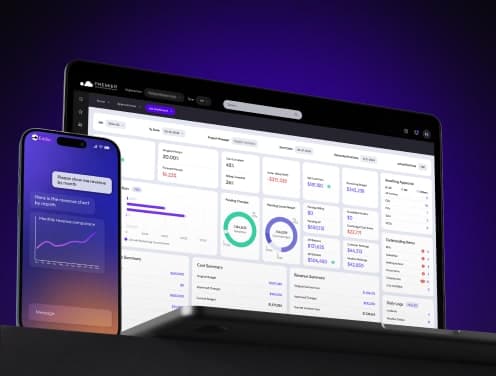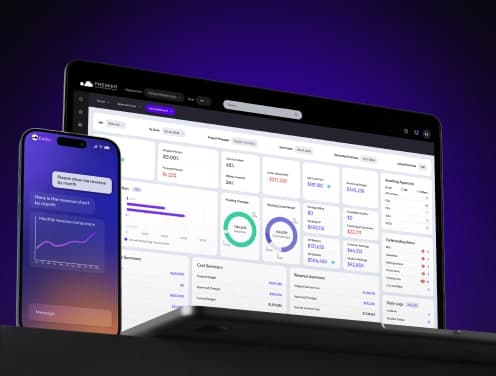
What is Sustainable Construction? A Complete Beginner’s Guide
Sustainable construction has become more important than most people realize. The construction industry uses 36% of global energy and produces 40% of worldwide CO2 emissions. These statistics show why the industry needs a dramatic shift in building practices.
The construction sector must reduce its massive environmental impact. Beyond carbon emissions, the industry produces 40% of solid waste and uses 30% of raw materials worldwide. The United Nations Environment Program reports some positive news - sustainability initiatives have helped reduce operational emission projections by 25 points.
This piece explains everything about sustainability in construction - from simple concepts to practical strategies you can use in your next project. You'll discover energy-efficient designs, renewable materials, and certifications that can confirm your green building efforts.
Understanding sustainability in construction
"With rising material and land costs as well as more attention driven towards green building standards, we have to think differently about how we build, the materials we use and where we build." , Wanona Satcher, CEO and Founder, Mākhers Studio
Sustainability in construction has changed how the industry looks at building projects. This new approach creates structures that benefit us long-term and reduce negative effects on our environment.
What is sustainability in construction?
Sustainability in construction means more than just using eco-friendly materials. It's an all-encompassing approach that balances environmental protection, economic viability, and social responsibility.
The World Green Building Council says sustainable construction is "the practice of creating structures and using processes that are environmentally responsible and resource-efficient throughout a building's life-cycle". This approach covers everything from the original design to the final demolition.
Sustainability works on three main areas:
- Environmental sustainability - Reducing pollution, conserving natural resources, and protecting ecosystems
- Economic sustainability - Creating cost-effective buildings that cost less to run over time
- Social sustainability - Making buildings better for people's health and comfort while helping nearby communities
The goal is to reduce harmful effects on the environment while making positive contributions. One definition puts it this way: it's about "construction activities whose negative impacts are minimized and positive impacts maximized so as to achieve a balance in terms of environmental, economic and social performance".
The basic principles include saving resources, reusing materials when possible, choosing renewable or recyclable resources, protecting nature, creating non-toxic spaces, and building quality structures.
How it is different from traditional methods
Traditional construction cares mostly about upfront costs, speed, and usual performance metrics. Sustainable approaches look at the building's entire life instead.
The UK construction industry alone creates about 100 million tons of waste each year. Making concrete, steel, and aluminum adds up to 23% of global emissions. Sustainable construction wants to cut these numbers down.
The choice of materials shows one of the biggest differences. Traditional methods use lots of concrete, steel, and other materials that need lots of energy. Sustainable construction prefers:
- Materials from local, renewable sources
- Products made from recycled materials
- Options that create less carbon than usual materials
- Materials that last longer and need less upkeep
Energy use is another big difference. Traditional buildings often rely too much on heating and cooling systems, which leads to higher bills. Sustainable buildings use smart design, better insulation, and renewable energy to use less power throughout their life.
Waste handling is nowhere near the same. Traditional construction creates huge amounts of waste, over 63 million tons every year in England. Sustainable methods try to create less waste and reuse or recycle materials during building.
The biggest difference might be in how they see the future. Traditional methods focus on quick results, but sustainability thinks about tomorrow. As one source says, sustainable construction wants "to meet the needs of the present without compromising the planet for future generations".
Learning these basic differences helps newcomers make better choices for the environment when building.
The environmental footprint of construction
The construction industry's environmental footprint reaches way beyond the reach and influence of what we can see. This massive industry affects almost every aspect of our planet's health, from carbon emissions to depleted resources and damaged ecosystems.
Energy use and CO2 emissions
Construction ranks among the world's biggest carbon emitters. Buildings and construction generate a staggering 37% of global greenhouse gas emissions. Two main sources create this environmental burden: operational emissions from heating, cooling and lighting, and embodied carbon in building materials.
Building operations contribute 30% of global final energy consumption and 26% of global energy-related emissions. Direct emissions from buildings hit 3 Gt CO2 in 2022, notwithstanding that indirect emissions climbed even higher to 6.8 Gt.
Construction materials carry their own heavy carbon footprint during manufacturing. To name just one example, concrete production adds approximately 8% of global CO2 emissions. The materials used in building construction - cement, steel, and aluminum - generated 2.5 Gt CO2 in 2022.
The problem's magnitude becomes clearer when you look at comparisons. Construction's carbon footprint is nowhere near a match for industries like aviation:
"Compare that to the 2-3% caused by aviation, which people fret far more about."
Buildings emissions must drop by 9% each year until 2030 to achieve climate goals - more than halving by the decade's end. This target calls for fundamental changes in our building methods.
Waste generation and material sourcing
The construction sector creates about a third of the world's overall waste. The United States alone produced over 600 million tons of construction and demolition (C&D) debris in 2018. This amount doubles the municipal solid waste from households and businesses.
The untapped value in over 75% of construction waste raises serious concerns. These materials usually end up in landfills - almost 145 million tons in the US during 2018.
Demolition work creates most of this waste - over 90% of total C&D debris. The national waste stream received 567 million tons of debris from demolition alone in 2018.
Resource extraction for construction takes a heavy toll on the environment. The industry uses:
- 40% of raw materials flowing into the global economy yearly - about 3 billion cubic tons
- Substantial forest clearing for timber
- Extensive mining operations for metals and minerals
- Habitat-destroying quarrying that damages landscapes
Impact on ecosystems and biodiversity
The built environment sector causes up to 30% of global biodiversity loss. This damage happens through multiple channels.
Urban expansion and construction work directly disrupt natural habitats. Wildlife gets displaced when sites are cleared, vegetation disappears, and ecosystems fragment. The industry's resource demands drive habitat loss worldwide, beyond visible destruction at building sites.
"Unsustainable mining, quarrying, and logging for timber, metals, and stone are cutting swathes through pristine rainforests, polluting watercourses, and driving untold habitat loss."
Construction poses unique threats to water systems. Infrastructure fragments over 60% of rivers globally. Nearby water bodies suffer harm to aquatic life from construction runoff that contains sediments, heavy metals, and chemicals.
On top of that, construction speeds up soil erosion and degradation. This reduces fertility and threatens species that depend on healthy soil. The massive carbon emissions make things worse by accelerating climate change, which forces species to migrate and destabilizes ecosystems.
We must recognize these extensive impacts to build more sustainably. The path to reducing construction's environmental footprint starts with understanding its true scope.
How to build sustainably: key strategies
Building in an environmentally responsible way needs strategies that work with nature, not against it. The right approaches at the planning stage bring the best results to meet sustainability goals and reduce long-term costs.
Design for energy efficiency
Energy efficiency is the life-blood of sustainable construction. The quickest way starts with a whole-house systems method to review how building components work together. This merged strategy looks at everything from insulation to appliances as connected parts of a system rather than separate pieces.
Building orientation makes a big difference in energy-efficient design. The right positioning relative to the sun helps control temperature naturally. This reduces the need for mechanical heating and cooling. Buildings in warmer areas stay cooler by limiting direct sun exposure, while those in cooler regions benefit from more sunlight.
Quality insulation is crucial to sustainable building. Good insulation combined with proper air sealing creates a thermal envelope that keeps indoor temperatures comfortable without wasting energy. Solutions like Insulated Concrete Form (ICF) construction are a great way to get excellent insulation while stopping air drafts.
Natural lighting strategies substantially cut electricity usage. Windows and glass elements in the right spots maximize daylight, which reduces the need for artificial lighting. This approach paired with efficient LED lighting cuts energy use even more.
Smart building technologies improve efficiency without losing comfort. Programmable thermostats help control temperature based on when people use the building. These small investments pay off through lower utility bills throughout the building's life.
Use of renewable materials
The move to renewable materials might be the most powerful strategy in sustainable construction. Bio-based materials like timber, bamboo, straw, and hemp store carbon as they grow. This turns buildings into carbon storage solutions instead of emission sources.
Mass timber shows particular promise. A cubic meter of wood stores approximately one ton of carbon, depending on the species. These timber structures also offer extra benefits:
- Light weight that works well for adding stories to existing buildings
- Natural insulation that cuts heating and cooling needs
- Potential for prefabrication that reduces construction waste
- Fire resistance with proper treatment
Clay is another excellent sustainable choice. Clay buildings block sound, resist fire, and regulate temperature well. Clay bricks can support buildings up to five stories high, much more than previously believed. Clay bricks also have a 10-20 times lower carbon footprint compared to concrete blocks.
Other natural materials bring specific sustainability advantages. Hemp grows fast with minimal pesticides and works well as insulation or "hempcrete". Straw, basically a waste product, provides great insulation. Germany's unused straw could insulate 350,000 single-family homes after accounting for animal needs.
Smart site selection and planning
A building's location substantially affects its environmental impact. Location-efficient sites put buildings near amenities like jobs, shops, schools, and services. This proximity cuts transportation needs and connects buildings to their communities.
Sites with existing transit connections attract businesses that want easier access to customers and workers. This type of planning encourages walking and reduces car dependence, which improves air quality and public health.
Compact development creates multiple sustainability benefits. Building in dense, previously developed areas:
- Cuts impervious surface per unit to improve stormwater management
- Reduces new infrastructure needs (streets, utility lines, water pipes)
- Helps rejuvenate neighborhoods by reusing existing structures
- Improves resilience in flood-prone areas when combined with green infrastructure
Water management is another key planning factor. Sustainable sites need designs that capture and filter rainwater. This reduces polluted runoff and protects water quality. These approaches, plus proper drainage systems, help solve problems from water shortages to water quality.
Smart landscaping works hand in hand with sustainable site planning. Plants placed strategically around buildings can reduce energy use for heating and cooling. This approach utilizes natural processes to improve building performance throughout its life.
Choosing the right materials
The right materials can make your green construction project a success. Smart choices reduce your environmental footprint and give you great performance. Let's look at some game-changing options that are reshaping the construction scene.
Sustainable wood and mass timber
Mass timber stands out as a breakthrough in green construction. Manufacturers can create this engineered wood from small-diameter or diseased trees that could become wildfire hazards. Unlike regular lumber in stick-frame houses, mass timber creates structural parts strong enough for big buildings.
A 25-story apartment building in Milwaukee shows what mass timber can do as the world's tallest structure of its kind. Mass timber is new to the United States but builders in Europe have used it for decades. The material keeps growing in popularity, with 1,860 US projects either finished or planned by June 2023.
The green benefits are clear. Trees store carbon as they grow, and mass timber keeps this carbon locked away instead of releasing it into the air. Better yet, choosing mass timber over concrete and steel can cut emissions from building materials by 13-26.5%.
Mass timber brings practical benefits too. Builders can work faster and quieter in any temperature compared to traditional methods. The material resists fire better than regular wood, costs less than concrete and steel, and handles earthquakes well.
Recycled plastic and composite materials
Our plastic crisis creates both problems and solutions. Only 9% of plastic waste gets recycled, but construction gives us a perfect way to reuse this troublesome material.
Turning plastic waste into building materials helps twice - it cleans up the environment and creates useful construction parts. Most plastic never breaks down, so using it in buildings keeps it safely contained.
Thermoplastics make up about 80% of all plastic used worldwide and work great for recycling because you can melt and reshape them many times without losing their basic qualities. High-Density Polyethylene (HDPE) brings amazing strength and chemical resistance, perfect for pipes, floors, and outdoor uses. Recycled PET from drink bottles becomes excellent insulation.
The process starts with shredding waste plastic. Then manufacturers add binding agents, UV stabilizers, and other ingredients before molding the final product. This creates boards, roof tiles, flooring, siding, bricks, and blocks.
Recycled plastic building materials last longer than traditional options. They don't rust, rot, grow mold, or break down from chemicals. Outdoor items like decking won't soak up water or create splinters, outlasting regular wood.
Low-impact concrete alternatives
Concrete production adds about 8% to global CO2 emissions. People use 33 billion tons yearly - making it second only to water in consumption - so finding alternatives matters.
Fly ash works great instead of regular cement. Power plants used to dump this coal byproduct in landfills, but now it shows up in 60% of modern US concrete mixes. AshCrete uses lots of recycled fly ash to replace cement and cut CO2 emissions substantially.
Blast furnace slag offers another good choice. This glassy material comes from cooling molten iron slag and can replace 70-80% of cement while making concrete stronger. It also creates less heat during hydration, which saves energy.
Micro Silica (or "Silica Fumes") is a super-fine powder that comes from making silicon and can replace 7-12% of cement. It creates stronger concrete that resists chemicals better, which works great for tough environments.
New options keep coming up. Timbercrete mixes sawdust with cement, sand, and binders to create material that weighs 2.5 times less than regular concrete. This mix stores carbon and insulates better.
Picking the right materials might seem tough at first. But each smart choice helps move construction toward a greener future.
Technology and innovation in green building
"Artificial intelligence, virtual reality, 3D processing and high-resolution imagery will become so prevalent that on-site visits to monitor progress will be nearly obsolete." , Patrick Quigley, Construction Technology Specialist
New technology keeps changing how we build sustainable structures. From managing energy to making evidence-based decisions, these advances help reduce environmental effects throughout a building's life.
Modular battery systems
Battery tech has changed the game for construction sites, especially when you have limited power access in remote areas. These modular batteries give builders an eco-friendly option instead of diesel generators. They cut both emissions and costs.
A construction site in Hong Kong shows this perfectly. Four modular batteries ran 64-ton tower cranes and reduced annual CO2 emissions by 495,865 kg. This meant 61% less emissions than diesel, plus savings of HKD854,000 in fuel costs. The project proves how batteries solve power problems where electricity access is limited.
These systems offer more than just environmental perks:
- Adaptable energy storage that meets different power needs
- Simple customization options for construction, farming, and industrial gear
- Lower repair costs since you only replace bad modules, not the whole battery
More construction firms choose these systems because they make both environmental and financial sense. The modular design helps recycling through easy take-apart and reuse in other applications.
Smart building systems
Smart buildings combine different technologies to work better, feel more comfortable, and use fewer resources. These buildings use IoT devices and sensors to collect up-to-the-minute data about conditions and energy use.
The energy savings are huge. Studies show smart tech can reduce office building energy use by 18% on average. Some buildings save up to 70% over three years. These results come from connecting various building parts:
"Smart buildings can reduce energy/carbon emissions and even achieve zero-carbon certifications by using IoT technology that utilizes hardware, software, and connectivity to manage environmental quality and electromechanical systems like HVAC, lighting, security, air quality, irrigation, etc."
Smart algorithms now study sensor data from building systems and adjust operations in split seconds. This marks a big change from engineers making manual tweaks to computers optimizing based on people, weather, and other factors.
Smart buildings focus on both sustainability and health. They check air quality non-stop to keep it at the right levels. This tackles growing worries about indoor health while saving energy.
Digital tools for sustainability tracking
Digital tech helps make better green choices throughout construction. Life cycle assessment (LCA) digital tools work really well - they can cut CO2 emissions by up to 40% in projects.
These tools give vital data for early choices:
"Proactive decisions in the early design phase lead to reduced emissions in the life cycles of the construction project."
Building Information Modeling (BIM) leads the way in sustainable construction tech. Six-dimensional BIM adds time, cost, and sustainability factors like energy use and carbon output to regular 3D models. Builders can spot problems before they start work.
Digital paperwork helps the environment by cutting paper use and related costs. Electronic systems calculate quantities by themselves. This saves time and resources while lowering the carbon footprint of sharing information.
Construction faces more pressure to go green. These technologies show practical ways to build more sustainably.
Certifications that validate your efforts
Third-party certifications validate your building's environmental goals in sustainable construction. These trusted standards turn vague sustainability claims into measurable achievements.
LEED and its point system
LEED (Leadership in Energy and Environmental Design) remains the world's most recognized green building rating system. This detailed system reviews buildings based on energy use, water efficiency, materials selection, and indoor environmental quality.
The LEED system uses a simple point structure:
- Certified: 40-49 points
- Silver: 50-59 points
- Gold: 60-79 points
- Platinum: 80+ points (highest level)
LEED sets itself apart by dividing requirements into prerequisites and credits. Prerequisites establish minimum standards that all buildings must meet without earning points. Credits help you earn points and highlight your building's exceptional performance.
New applicants appreciate LEED's flexibility. The system has nine certification programs that cover everything from commercial buildings to retail spaces. This adaptability makes LEED suitable for projects of all types while upholding strict standards.
FSC for material sourcing
Forest Stewardship Council (FSC) certification targets sustainable timber sourcing. This focus matters because deforestation ranks as the second leading cause of carbon pollution and creates 20% of total greenhouse gas emissions.
FSC labels come in three distinct types:
- FSC 100%: Products made entirely from FSC-certified forests
- FSC Recycled: Items containing 100% reclaimed materials
- FSC Mixed: Products combining certified forests, recycled materials, and controlled wood
Chain-of-Custody certification serves as FSC's foundation. This process tracks materials from forests through the supply chain and ensures certified products stay identified or separated from non-certified ones. Companies must obtain FSC certification to label products as FSC-certified before they reach end users.
Construction professionals value FSC because it tackles multiple sustainability aspects at once. The certification protects biodiversity, conserves water resources, and safeguards indigenous rights.
Living Building Challenge
Living Building Challenge (LBC) sets the highest sustainability standards. Unlike other systems that rely on predicted performance, LBC certification demands verification through actual operational data over 12 months.
LBC certification comes in three pathways with increasing demands:
- Core: Requires achievement of 10 Core LBC Imperatives
- Petal: Requires all Core Imperatives plus all requirements in at least one complete Petal (Water, Energy, or Materials)
- Living: Requires all 20 applicable Imperatives – the most demanding standard
The challenge groups requirements into seven performance areas called "Petals": Place, Water, Energy, Health + Happiness, Materials, Equity, and Beauty. This comprehensive approach pushes projects beyond reducing harm toward truly regenerative design.
LBC works anywhere in the world, as shown by certified projects in many countries. The certification values technical performance and connection to nature and community. Buildings don't just sustain - they actively restore.
These certification programs give you more than recognition. They provide structured frameworks to implement green construction practices throughout your project.
Overcoming barriers to sustainable construction
Construction professionals often see sustainability as a path blocked by impossible barriers. These obstacles aren't as challenging as they might seem at first glance.
Cost vs long-term savings
The biggest problem many projects face is the belief that sustainable construction costs too much. The reality shows building green costs just 2% more upfront than conventional methods. This small premium fades quickly when you look at the complete financial picture.
Green buildings pay for themselves faster than you might expect. They save 14-19% in operational costs, and LEED buildings show nearly 20% lower maintenance expenses compared to typical commercial buildings. These savings outweigh any initial cost premiums within a reasonable time.
Green buildings also sell for more in the market. Building owners report a 10% or higher increase in asset value, this number has almost doubled since 2012. Some markets see tenants paying premium rates for certified spaces. To name just one example, Los Angeles tenants pay USD 2.91/ft² for LEED certified space compared to USD 2.16/ft² for traditional buildings.
Training and workforce development
A skilled green building workforce remains crucial. Sustainable construction requires specific expertise in energy-efficient designs, renewable materials, and green technologies.
Workforce development programs are a great way to get solutions. The Green Building Alliance's certifications and training help people learn the skills needed for high-performance building jobs. These programs connect job seekers directly with sustainable construction employers.
The Department of Energy (DOE) supports this shift actively. Its Building Technologies Office gave USD 26.30 million to 40 projects that advance building efficiency goals. The office also provided USD 83.00 million in funding to 44 projects focused on lowering energy bills through innovative building technologies and workforce development.
Client education and demand
Client awareness drives sustainable construction adoption. The US market shows client demands and healthier buildings as the top two triggers for green building.
Client perspectives on sustainability keep evolving. Research shows home buyers will pay up to USD 9,292 more upfront for homes that save USD 1,000 yearly on utility costs. They spend over USD 2,000 extra for homes certified to above-code standards for health and wellness.
A 2024 survey shows 50% of builders cite increased buyer demand as their key motivation for green construction. Government and utility incentives (48%) and quality green product availability (37%) serve as additional motivators.
Want to see how technology can make your sustainable construction projects more efficient? Book a demo with one of our product experts today to learn about simplified project management for green building initiatives.
The future of sustainability in the construction industry
The construction world is changing faster toward green practices. Global needs and new technology promise to change how we build fundamentally.
Trends shaping 2025 and beyond
The 2025 Sustainable Construction Barometer shows that 69% of stakeholders now see sustainable construction as a priority. Different regions have unique priorities that create an interesting global picture. Asia-Pacific and Africa concentrate on climate resilience. Latin America focuses on ecological materials. Europe puts building renovation first, while North America tackles affordability challenges.
Policy shifts and global goals
The UN's 17 Sustainable Development Goals guide construction's sustainability efforts. We have a long way to go, but we can build on this progress as only 17% of targets are on track. Architects and engineering firms lead this transformation with 56% support, and construction companies follow at 44%. Strategic collaborations between public and private sectors boost infrastructure development. These opportunities exist despite changing federal policies.
Role of AI and data in green building
AI technologies revolutionize green building practices. These systems use sensor data and building management information to optimize energy use. Buildings save 18% energy on average, and some achieve 70% savings over three years. AI-powered digital twins help manage building lifecycles, while machine learning makes design parameters better.
Want to see how technology can support your sustainability goals? Book a demo with one of our product experts today to explore digital solutions for your green building projects.
Conclusion
The construction industry faces major environmental challenges right now. This piece explores how traditional building methods contribute by a lot to global emissions, waste, and resource depletion. But there's a great chance ahead. Green building makes sense not just for the environment, it's good business too.
Green building methods cost just 2% more upfront but save 14-19% in operating costs and boost property values. On top of that, these projects often get higher rental rates, which shows how eco-friendly practices benefit both the environment and the bottom line.
New materials like mass timber, recycled plastics, and better concrete alternatives show us the way forward. These innovations help builders reduce their environmental impact when combined with smart construction ERP systems, construction accounting solutions and digital construction project management tools. Quality and performance stay just as good.
LEED, FSC, and the Living Building Challenge give builders clear frameworks to turn general eco-friendly goals into real results. These standards help confirm your progress as you move toward sustainable building.
Obstacles exist, but they're nowhere near as tough as many people think. Quick payback periods, growing customer needs, and better training programs make eco-friendly construction more available and practical every day.
Builders have reached a turning point. Today's choices will affect buildings for decades. As technology gets better and clients become more aware, eco-friendly construction will become normal instead of special. This approach creates buildings that work better, cost less to run, and keep people healthier while protecting our planet.
You have what it takes to build greener now. We can't ask if green building costs too much, we need to ask if we can risk not doing it.
Key Takeaways
Sustainable construction is no longer optional, it's essential for addressing the industry's massive environmental impact while delivering superior long-term value.
• Construction's environmental impact is staggering: The industry accounts for 37% of global greenhouse gas emissions, 40% of solid waste, and 30% of raw material consumption worldwide.
• Green building pays off quickly: Sustainable construction costs only 2% more upfront but delivers 14-19% operational savings and up to 10% higher property values.
• Material choices make the biggest difference: Mass timber, recycled plastics, and low-carbon concrete alternatives can reduce building emissions by 13-26.5% while improving performance.
• Technology accelerates sustainability: Smart building systems reduce energy use by up to 70%, while AI and digital tools optimize performance throughout a building's lifecycle.
• Certifications validate your efforts: LEED, FSC, and Living Building Challenge provide clear frameworks that transform sustainability goals into measurable achievements and market advantages.
The shift toward sustainable construction isn't just about environmental responsibility, it's about building smarter, more profitable structures that benefit everyone from developers to occupants while protecting our planet for future generations.
FAQs
Q1. What exactly is sustainable construction? Sustainable construction is an approach that aims to create buildings and infrastructure while minimizing environmental impact. It focuses on using eco-friendly materials, reducing energy consumption, and considering the long-term effects on both the environment and occupants throughout a building's lifecycle.
Q2. How does sustainable construction differ from traditional methods? Unlike traditional construction, which often prioritizes short-term costs, sustainable construction considers the entire lifecycle of a building. It emphasizes energy efficiency, uses renewable or recycled materials, and aims to reduce waste and emissions. Sustainable methods also focus on creating healthier indoor environments and minimizing negative impacts on surrounding ecosystems.
Q3. What are the key benefits of sustainable construction? Sustainable construction offers numerous benefits, including reduced operational costs through energy efficiency, higher property values, improved occupant health and productivity, and a significantly lower environmental impact. While initial costs may be slightly higher, the long-term savings and benefits often outweigh this premium.
Q4. What role does technology play in sustainable construction? Technology is crucial in advancing sustainable construction practices. Smart building systems, AI-powered energy management, and digital tools for sustainability tracking help optimize building performance and reduce resource consumption. These technologies enable real-time monitoring and adjustments, leading to significant energy savings and improved overall efficiency.
Q5. How can construction professionals validate their sustainability efforts? Construction professionals can validate their sustainability efforts through recognized certifications such as LEED (Leadership in Energy and Environmental Design), FSC (Forest Stewardship Council) for sustainable wood sourcing, and the Living Building Challenge. These certifications provide structured frameworks and measurable standards for implementing sustainable practices throughout the construction process.





















